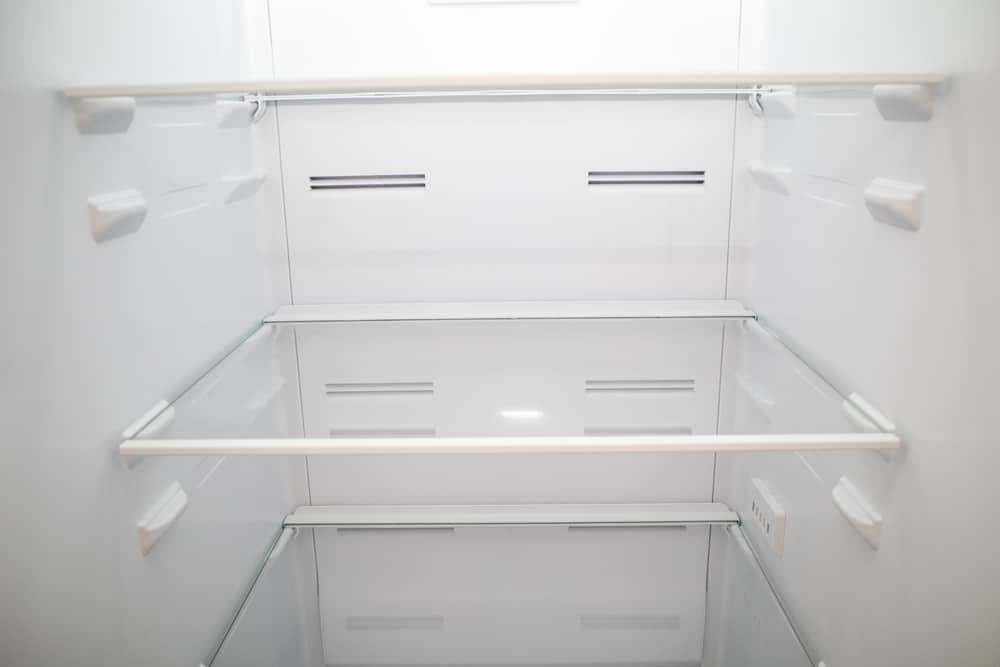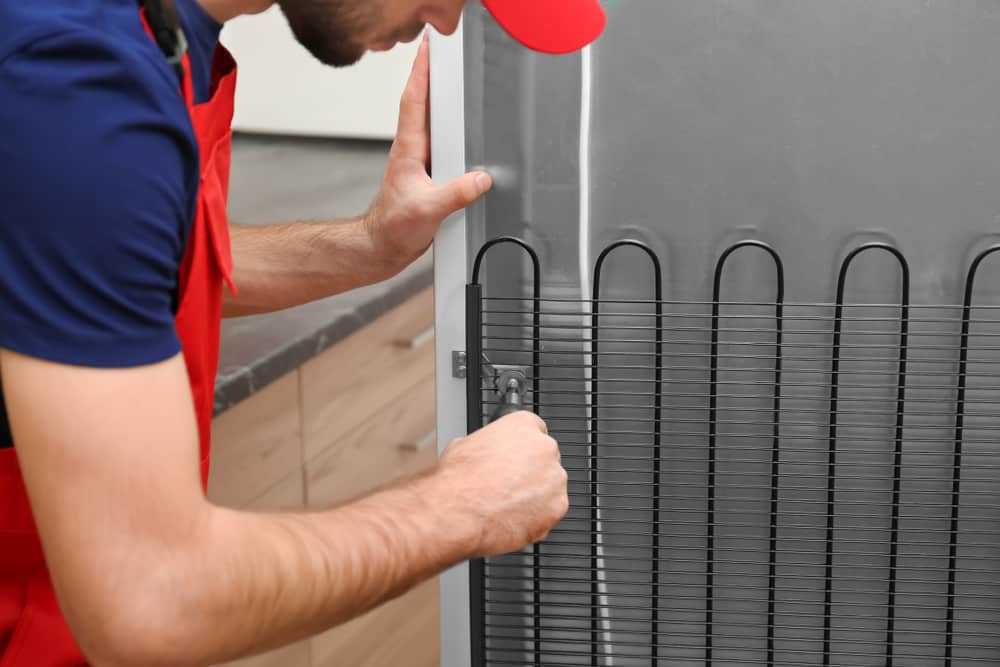Over 80 million people own a refrigerator in the United States, about 35 million of which have two fridges. But few people who own this appliance understand what a refrigerator tray is.
As someone fascinated by how refrigerators operate, I know firsthand how crucial fridge floor trays are because they ensure the condensation inside your fridge from defrost cycles doesn’t accumulate, which would prevent your drip tray from functioning correctly.

Condensation generated by your refrigerator can result in liquid that needs to be collected by a drip pan
So, whether you’re bringing home a new Samsung refrigerator or you want to maintain the fridge you already have, and you’re asking yourself, “What is a refrigerator floor tray, and where do I find it?” I’ll be answering these questions and more.
A refrigerator floor tray sits beneath a refrigerator, allowing it to capture water as it flows out of your fridge. The small amount of water it collects, which is almost always condensation from inside the fridge, passes through a drain hole and tube.
You might be thinking-how does condensation form inside your fridge?
The reason this occurs is when refrigerators go through defrosting cycles. That way, it melts any ice building inside your fridge that could negatively impact your food storage.
A Close Up Look at a Refrigerator Tray Drip Pan Which is Being Assessed as Part of Diagnosing a Leaking Refrigerator
So, water moves down the inside of your refrigerator wall, through a drain in your fridge’s floor, and empties into the floor tray.
But that’s not all. Refrigerator floor trays have a unique position that allows them to catch condensation as it drips off condenser coils at the back of your fridge.

Condenser coils can be a source of water dripping
To cover our bases, you may hear people calling refrigerator floor trays different names. Examples include:
Now you know the answer to “What is a refrigerator floor tray?” but you might want to find it, especially if you suspect there’s an issue.
In almost all cases, fridge floor trays sit underneath a fridge. It is actually also referred to a drip pan, and under refrigerator tray. The reason for this is that gravity naturally draws water and condensation to the bottom of your appliance.
To find your refrigerator floor tray, start by removing the kick panel. You’ll find this on the bottommost part of your fridge, facing the front. The tray will be there when you pull off the bottom in many cases.
If you don’t see the tray there, put your muscles to work and pull your fridge away from the wall. Then, check underneath the fridge toward the back. You should see the tray there.
Follow the drain tube should you still have trouble locating your fridge floor tray at this point. It’ll empty into the tray, so it’s a sure-fire way to track it.
Running an air conditioner in your house isn’t enough to dry up excess water that falls from your fridge, which is why a refrigerator drip tray is so important. There are two main types of trays:
The location of the tray will depend on the fridge brand. Furthermore, each brand has its own style and size of these trays. In almost all cases, your fridge floor tray will be metal or plastic.
It’s common to find it sitting on top of brackets, as they allow you to move the tray in and out without spilling water on your floor. However, some fridge brands don’t offer consumers access to their trays.
Therefore, if you experience a floor tray issue and can’t figure out how to access it, you might not be crazy and will have to shell out money for a professional to handle it.
Frigidaire refrigerators, among many other brands, offer cutting-edge fridge floor tray designs that often make it unnecessary to access these trays.
The reason being is that fridge floor trays usually require little maintenance, given that warm air from the compressor motor encourages the condensation in these pans to evaporate.
That said, if you see water on the floor where your fridge sits, you might have an overflowing situation on your hands. In that case, it’s crucial to remove the fridge tray and dump out the water.
It’s important to clean your refrigerator floor tray with soap and warm water occasionally. Even though you’re likely not keeping your fridge on a carpet, the plastic or metal tray can still mold.
Cleaning your fridge floor tray by hand is sufficient; putting it in the washing machine may create problems. Also, dry the tray well before putting it back under your fridge, as you don’t want to spark mold growth.
While you’re at it, use a vacuum cleaner to remove debris and lint around the coils and area where your floor tray sits to prevent future issues.
Refrigerators are an appliance that so many of us take for granted. So, you usually don’t wonder, “What is a refrigerator floor tray?” until you notice a water leak that appears to be emanating from your fridge. The last thing you want is hardwood floor damage due to a problem with your fridge. Even a small leak can cause major damage to your kitchen floor if it isn't addressed quickly.
While what appear to be refrigerator leaks are generally are due to a problem with your refrigerator (like a problem with your water line, or a clogged defrost drain), sometimes the drip pan can be the culprit. Leaks in refrigerator floor trays can happen, especially if you have one made from cheap plastic or if your tray isn't positioned properly to catch water. To identify the cause of a leak, check if the tray is in its correct position.
If all looks good with the position, remove the tray and fill it with water. Can you spot a crack where water is seeping through? If so, it’s time to toss out your floor tray and purchase another tray instead.
Other issues that can cause your refrigerator to leak include a fridge that sits on an uneven surface, washer parts and other pieces not tight enough, and water supply line issues.
Yes, almost all auto defrost / frost free freezers will have a drip tray to collect the water that is produced as part of the auto defrost process. Manual defrost models will generally not have a drip pan to collect excess water.
